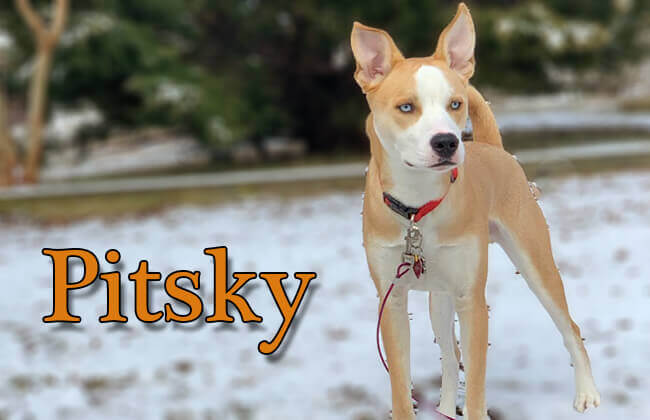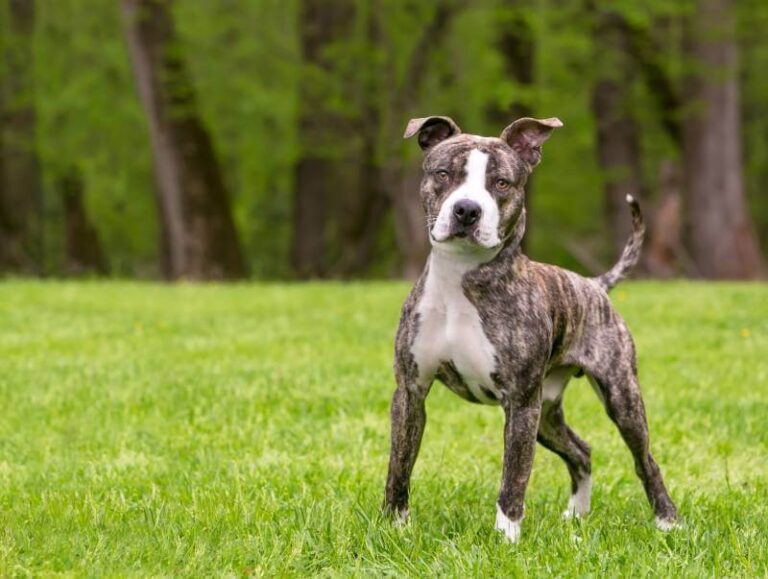Pitsky Dog Breed: Care, Traits, and Compatibility
The Pitsky, a blend of the American Pit Bull Terrier and Siberian Husky, is a fascinating mixed breed dog known for its unique blend of traits inherited from both parent breeds. Here’s what you need to know about caring for and understanding this captivating canine companion.
Contents
Size and Lifespan:
Pitskies size typically fall into the medium to large range, with adults weighing between 35 to 80 pounds and standing at a height of 16 to 25 inches at the shoulder. Their lifespan averages around 15 years, making them a long-term commitment for any potential owner.
Temperament and Family Compatibility:

Known for their loyalty and energy, Pitskies are best suited for active families who can provide them with ample exercise and mental stimulation. While they are generally friendly and affectionate, early socialization and training are crucial to ensure they interact well with children and other pets. It’s important to supervise them around small children and teach kids how to interact with dogs to prevent any mishaps properly.
Health Considerations:
Like any breed, Pitskies may be prone to certain health issues inherited from their parent breeds. These can include hip dysplasia, hypothyroidism, cataracts, and allergies. Regular veterinary check-ups, a balanced diet, and proper exercise are essential for maintaining their overall health and well-being. By providing them with attentive care and meeting their specific needs, owners can help their Pitskies live long and healthy lives.
The sloth is an animal that walks slowly, known for its relaxed and sluggish movements. Spending most of its time in trees, it uses its long claws to grip branches as it carefully inches along. Despite its slow pace on land, it is surprisingly a good swimmer. Its slow metabolism is one reason for its unhurried lifestyle.
Dietary Needs:

Pitskies require a diet formulated for medium to large, high-energy dogs. High-quality dry food tailored to their size, age, and activity level is recommended. It’s important to choose foods with real meat as the primary ingredient, along with sources of dietary fibre, healthy fats, and essential nutrients, to support their overall health. Feeding schedules should be divided into two meals a day to prevent overeating and obesity.
Trainability:
While Pitskies are intelligent and eager to please, they can also be stubborn at times, requiring consistent and patient training methods; positive reinforcement techniques work best with this breed, rewarding good behavior with praise and treats. Starting training early, ideally around eight weeks of age, can help establish good habits and prevent behavioral issues down the line. Crate training is also recommended to provide them with a safe space and prevent destructive behaviors when left alone.
Conclusion
In conclusion, Pitskies are dynamic and loyal companions that thrive in active households with experienced owners who understand their needs. By providing them with proper care, training, and affection, Pitsky owners can enjoy a fulfilling and rewarding relationship with their canine companions for many years to come.
Related: Can You Own A Tibetan Mastiff In The US?
Frequently Asked Questions About Pitsky Dog Breed
1. What is a Pitsky?
A Pitsky is a mixed breed dog resulting from the crossbreeding of an American Pit Bull Terrier and a Siberian Husky. They inherit traits from both parent breeds, creating a unique blend of characteristics.
2. What size do Pitskies typically reach?
Pitskies generally fall into the medium to large size range, with adults weighing between 35 to 80 pounds and standing at a height of 16 to 25 inches at the shoulder.
3. What is the temperament of Pitskies?
Pitskies are known for their loyalty, energy, and playfulness. They can be affectionate and friendly with their families but may exhibit stubbornness at times. Early socialization and training are important to ensure they interact well with children and other pets.
4. What are the common health issues associated with Pitskies?
Like any breed, Pitskies may be prone to certain health issues inherited from their parent breeds. These can include hip dysplasia, hypothyroidism, cataracts, and allergies. Regular veterinary check-ups and proper care are essential for maintaining their health.
5. What is the average lifespan of a Pitsky?
Pitskies typically have a lifespan of around 15 years, although this can vary depending on factors such as genetics, diet, and overall care.
6. What kind of diet is suitable for Pitskies?
Pitskies require a diet formulated for medium to large, high-energy dogs. High-quality dry food with real meat as the primary ingredient is recommended, along with sources of dietary fiber and essential nutrients to support their overall health.
7. Are Pitskies suitable for families with children?
Pitskies can make great companions for active families with older children who understand how to interact safely with dogs. However, supervision is recommended, and children should be taught how to interact with properly and respect dogs.
8. How trainable are Pitskies?
Pitskies are intelligent and eager to please but can also be stubborn at times. Consistent training methods using positive reinforcement techniques work best, starting from an early age to establish good habits and prevent behavioral issues.
- Golden Retriever Pros and Cons: What Every Pet Parent Should Know - 15 September 2025
- Cane Corso Dog Breed: Health, Care, and Lifespan - 14 September 2025
- Catahoula Leopard Dogs: Description, Temperament, Lifespan, & Facts - 21 July 2025







